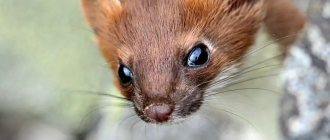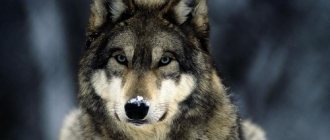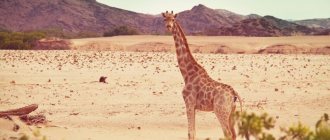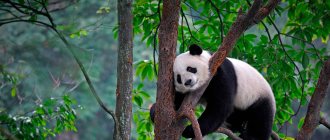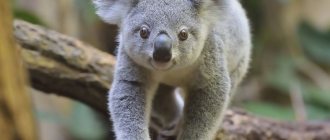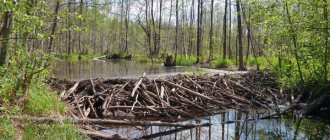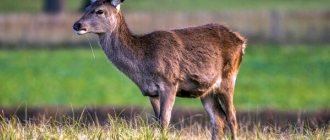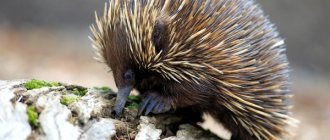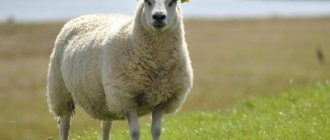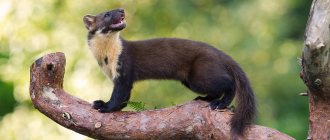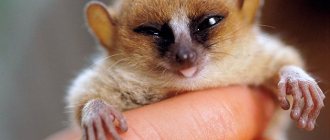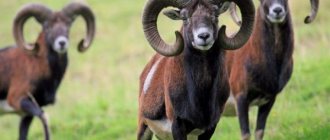- Wild animals
- >>
- Mammals
The echidna is very impressive with its appearance, since it is not immediately clear what animals it is close to.
She seems to have quills, and not a hedgehog or a porcupine, she destroys anthills, but has nothing to do with anteaters. What is truly incredible is the process of reproduction and raising the young: she lays eggs, but feeds the young with milk, although not from the nipples. It also bears babies in a pouch. She also lives on the most amazing continent - Australia. A funny thing was said about these animals: the echidna mocks scientists with its existence. Indeed, experts failed to understand much, and the echidna still arouses great interest among them. Locals also call the echidna the spiny anteater.
Origin
Echidnas belong to the echidna family (Tachyglossidae), and their only living relative is the platypus. Echidnas likely evolved from some unknown monotreme ancestor during the Paleogene period (65.5 to 23 million years ago). Echidnas' lack of teeth has made it difficult to study their evolutionary history because teeth are well preserved and often help determine relationships between mammals.
The oldest known echidna fossil was recovered from a cave deposit in eastern Australia. She lived there approximately 17 million years ago (during the early Miocene era).
Photo: John Cameron
Although the material found is fragmentary, scientists have suggested that the main characteristics of the echidna, such as a bird-like, toothless skull and a strong skeleton, were already formed by this time. It appears that echidnas were once widespread and diverse, with one particularly large subspecies measuring over 1 meter in body length.
Most fossil echidnas (genus Megalibgwilia) are an intermediate phylum between today's short-beaked and long-beaked families.
Appearance
Photo: Xavier Hoenner
Quills are one of the most distinctive characteristics of echidnas. These spines cover the entire dorsal surface, including the small tail. The animals also have fur, which in some subspecies can be even longer than the needles.
Under the fur of the spines there is a well-developed subcutaneous muscle layer, which partly explains the amazing strength of echidnas. This muscle layer allows them to change the contours of their strong body and thereby wedge themselves into cracks and between tree roots. Echidnas can also quickly burrow into the ground if disturbed. At the same time, it seems that they fall straight into the soil, and after digging they are well camouflaged with thorns. This combination of spines, strength and defensive strategy makes the echidna a difficult target.
Echidnas eat and breathe through a bald, tubular “beak” protruding from their dome-shaped body. The animal has beady eyes and simple slits for ears, and at the end of its beak are two small nostrils and a tiny toothless mouth with hard pads at the back.
Photo: Jacob Dyer
Receptors in the beak skin can sense electrical signals produced by the muscles of invertebrate prey. Males have non-venomous spurs on the ankles of their hind legs, while females have pouches on the underside of the body.
Echidnas can be active day or night, slowly exploring the ground in search of prey, but from the intense midday heat they must take refuge in burrows or caves. They have few sweat glands and cannot pant to get rid of excess heat; Therefore, echidnas sometimes die from heat stress if they cannot find cool shelter. But if the air temperature is too low, torpor or hibernation occurs.
Echidnas and other monotremes have a low metabolic rate and a low body temperature in the range of 29-32 °C. These animals have larger brains than would be expected for their body mass. In particular, the cerebral cortex is large and highly convoluted.
Lifestyle
By nature, the echidna prefers to live alone. The animal very carefully protects its territory and will fight with all its might against unwanted guests. But animals do not acquire permanent housing, preferring instead to move freely around the world. By the appearance of the animal you cannot say that it can swim across even a small body of water, but this is not so. Echidna swims beautifully
.
Animals have a well- developed instinct of self-preservation
. They are able to instantly react to danger and take appropriate measures to protect themselves from the enemy. The most common place for shelter during times of danger is thickets and rock cracks.
If the echidna comes face to face with its enemy, it begins to very quickly curl up into a ball, exposing its needles as a defensive weapon. This method is very helpful in saving the life of an echidna. But the animal uses this method of self-defense when the ground is too hard, and the echidna does not have the opportunity to dig a hole for itself to hide in.
Varieties
Subspecies are distinguished by their spines, the number of claws on their feet, and the size and shape of their beak. There are two types of echida:
- short-beaked, or Australian, echidna (genus Tachyglossus);
- long-beaked echidnas (genus Zaglossus).
Short-beaked echidna
Photo: Wikimedia Commons
The Australian echidna has a proboscis beak directed forward. The body length of the animal, including the head and rudimentary tail, ranges from 30 to 45 cm. The body is densely covered with needles and fur. Echidnas from cooler areas such as Tasmania have long fur that partially hides the spines, while echidnas from arid zones appear to be entirely covered in spines rather than fur. The short-beaked echidna catches prey whole with its long, sticky tongue, but can also use its beak to cut large, soft-bodied organisms into smaller pieces.
Long-beaked echidnas
Long-beaked echidnas typically grow up to 60 cm in length, although one recorded individual has reached 100 cm in length. Like their short-beaked cousins, subspecies of long-beaked echidnas vary greatly in their fur and spines. Typically, their spines are much shorter and less numerous than those of the short-beaked echidna. The beak is similarly used to probe leaf litter on the forest floor for food. But their tongue is shorter and covered with back-directed barbs, with which the animal catches earthworms.
Photo: Johannes Pfleiderer
There are three living subspecies of long-beaked echidnas:
- Western long-beaked echidna, or Bruin's echidna. A distinctive feature is a downward-pointing trunk, fewer spines and brown fur. The animal also usually has three claws on its paws. Representatives of this subspecies are quite large, they often reach 75-78 cm in length and gain weight of about 7-9 kg.
- Sir David's long-beaked echidna, or Attenborough's echidna, was first scientifically described at the end of the 20th century. It differs from other long-billed subspecies in its small size and straight, short trunk; and in other respects it resembles the western long-beaked echidna.
- The eastern long-beaked echidna, or Barton's echidna, is often larger and heavier than its counterparts. The weight of an adult reaches 10 kg, and the body length is 100 cm. It has five claws on its paws.
What does it look like
This is a relatively small animal, externally resembling a porcupine or a hedgehog, since the body is covered with a thick layer of hair in the form of needles up to 5–6 cm. Dimensions in length are 30 cm. The animal has 2 pairs of short, but strong and fleshy paws with large claws, which allows them to dig deep holes.
The head is a continuation of the body, there is no neck. The muzzle is beak-shaped, with a small mouth located at its tip. The animal has no teeth, so it uses the friction of the tongue against the palate to chew food. The eyes are small and have not only eyelids, but also a special nictitating membrane.
It is one of the few mammals that lay eggs
The mammal has a tail, although it is difficult to see as it is covered in spines. The animal is a monotreme, that is, all waste products (urine, sexual secretions and feces) exit through one opening - the cloaca.
Geographic range
Short-billed individuals are widespread in the south and east of New Guinea, mainland Australia, Tasmania and Kangaroo Island. This subspecies occupies most of three countries: Australia, Papua New Guinea and Indonesia. Three modern subspecies of long-beaked echidnas are found exclusively on the island of New Guinea.
Photo: Ken Griffiths
These mammals thrive in a variety of habitats, including open forests, savannas, farmlands, semi-arid and arid areas. They have a wide altitudinal range of habitat: from sea level to 1,675 meters. The echidna is most often found near hollow logs, in forest floors and in caves, which allow it to find shelter and plentiful food.
Habitat
The echidna's natural habitat is Australia, Tasmania and New Guinea. Therefore, this animal is also called the Australian echidna.
The animal prefers damp, shady places with dense vegetation, forests, hilly or mountainous terrain, and sometimes climbs up to 2500 meters above sea level. Avoids the plains.
This animal does not have a permanent habitat. It stops to rest or spend the night in the first suitable place - under the roots of trees, in rock crevices, in small caves, in the burrows of other animals, most often rabbits or wombats .
Or maybe just lie down in the thick grass. Having rested, he immediately leaves and forgets about his temporary abode.
One of the first sketches of an echidna
Interesting! The first researcher who described the echidna in more or less detail was George Shaw in 1792. After him, many researchers became interested in the mammal. But this animal is very difficult to study, since it is “snide” - very secretive and cautious, avoiding interference in its life in every possible way. The echidna somehow senses that she is being watched and immediately hides in a secluded place. For a long time it was not possible to take a photo of it, so sketches of the animal were presented in the scientific literature.
Behavior and lifestyle
Echidnas burrow in the substrate for shelter from the cold and build nursery burrows for their offspring. They reduce their energy intake by hibernating from early autumn to late spring, reducing their body temperature to 8-10 degrees Celsius during torpor and using behavioral thermoregulation to maintain their desired body temperature. During hibernation, periodic awakenings from torpor are observed. The timing of hibernation seasons depends on the subspecies, geographic location, sex, and reproductive status.
Echidnas nest in temporary sites and have overlapping habitats. Their movements depend on food availability rather than territoriality. Animals gather together only during the breeding season. When the young animals are completely overgrown with needles and fur and are able to feed on their own, they leave the nursery and also begin to lead a solitary lifestyle.
Eating habits
Photo: Dominic Jeanmaire
Adults eat ants, termites and other invertebrates. They make feeding pits, raking the soil in search of food, and prefer to feed under the canopy of large trees. Their long snouts and sticky tongues reflect their special diet. Echidnas dig into the nests of ants and termites with their front paws, stick their long, sticky tongues into the crevices of the nest, and crush insects with the pads of their teeth. Their feeding habits make it difficult to separate soil from food. Thus, most of their feces consists of soil.
What does an echidna eat?
The basis of nutrition is ants and termites, the search for which takes most of the life. Having discovered an anthill, the animal begins to dig it out, licking the ants with its sticky tongue. The long muzzle simplifies the process and also helps to dig in the ground.
The mammal mixes a lot of sand, dust, grass and dry wood into its food
Strong paws and large claws allow them to strip bark from trees or destroy termite mounds. The animal is capable of moving large stones that exceed its own weight. In rare cases, the animal digs turf or thickets of moss, under which there may be larvae or insects.
While feeding, they swallow large amounts of soil and small stones. This helps you digest food better. The animal does not drink water at all.
Reproduction and development
For echidnas, the courtship period occurs from June to August, and can last from several days to several weeks depending on the geographic region and subspecies. During this period, females may be pursued by one or more males. Observations of many males following individual females led to the coining of the term "echidna train". Females will only mate with one male per season.
The female lays a leathery, soft-shelled egg in an incubation pouch. The young hatch after 10 or 11 days with an egg tooth and a fleshy outgrowth (caruncle). Echidnas exhibit a long lactation stage, lasting from 150 to 200 days depending on habitat and subspecies. When the cubs emerge from the pouch after 2-3 months, their body is covered with spines. Mothers return to the nursery burrow every three to five days to nurse their young. Females do not have nipples; they feed their offspring through pores connected to their paired mammary glands.
Photo: Babette Bombshell
The development of the cubs is long. The young reach adult size in three to five years. Cubs weigh about 0.3 kg; when weaned, they gain weight up to 0.7-2.1 kg, which is from 28 to 48% of the weight of an adult.
- Breeding interval: once a year
- Breeding season: June to August
- Litter size: one cub
- Average gestation period: 23 days
- Average age of sexual or reproductive maturity: 18 months
Interesting facts about echidnas
- As you know, due to the hot and dry climate in Australia, natural fires are common. In this case, echidnas have developed a unique method of survival: at the sight of an approaching fire, these animals do not flee, but find a hollow in a tree or burrow into the ground and fall into suspended animation! As soon as the first insects appear at the site of a natural disaster, the animals emerge from hibernation and return to their normal lives. One can only wonder how echidnas adapted to Australian realities and learned to withstand fires.
- Males have a bizarre penis with four heads. During mating, two heads close while the other two become larger to fit into the female's two-branched reproductive tract.
- Echidnas form so-called “mating trains.” A strange process marks the beginning of the breeding season. At this time, up to a dozen males line up nose to tail behind one female - from the outside it looks like a train. They can follow the female for about a month, then leaving the procession, then returning. When the female is finally ready to mate, the males dig a trench in the ground around her. Next, they compete for the right to possess the female, pushing each other out of the trench until only one male remains near the female - the winner. He gets the opportunity to continue his family line.
- Male echidnas can also mate with wintering females. Sometimes they wake up early from hibernation and sneak into the burrows of still sleeping females. This can lead to females waking up from hibernation to find themselves pregnant.
- Like the platypus, the echidna has many electroreceptors on its beak, with which it senses electrical impulses from ants and termites. But while the platypus has 40 thousand electroreceptors, the spiny anteater has only 400-2000.
- Echidnas have an unusual brain - it is very large relative to the size of their body. In structure, it is similar not to the brain of insectivores or rodents, but to the brain of broad-nosed monkeys.
- For a long time, it was believed that echidnas do not generally enter the state of rapid eye movement sleep, which people associate with dreams. But recently, researchers discovered that the animals can experience REM sleep at a certain temperature - around 25°C - but not at higher or lower temperatures.
- The world's largest flea, Bradiopsylla echidnae, lives on echidnas. Its length is 4 mm.
- Echidnas live a long time, and their high life expectancy (up to 50 years in captivity) is due to their low body temperature and slow metabolism.
The echidna is one of the oldest surviving species on Earth. However, scientists still have many questions about this elusive animal, the answers to which have yet to be found.
- Marsupial anteater
- Unusual animals
- Red-eared…
- Scientists…
- Kangaroo -...
- Animals of Australia
Lifespan
Echidnas are long-lived; one individual in the wild lived to be 45 years old, and another individual in captivity was over 50 years old at the time of death. This is almost 3.7 times longer than would be expected based on the echidna's body size.
Longevity is explained by the peroxidation-resistant membrane composition, low levels of polyunsaturated and high levels of monounsaturated fats. A long lifespan is also associated with a very low metabolic rate, except when awakening from a torpor. During these periods, the metabolic rate increases up to nine times the normal metabolic rate.
Titanomachy
Zeus followed his grandmother's advice, descended to Tartarus and enlisted the help of these creatures. In addition, he found his lightning bolts there, and his brothers Hades and Poseidon, who accompanied the Thunderer on his journey, received their artifacts. We all know that Zeus and his close gods and titans won in the Titanomachy.
But Gaia miscalculated here. Instead of establishing peace, Zeus became an even greater tyrant. He did not want to hear any excuses and simply sent all the opposing titans - the children of Gaia - to Tartarus.
Natural enemies
Predation is not a major threat to echidnas, although wild cats, wild boars, dingoes and goannas sometimes prey on them. Animal predators mainly pose a threat to hatchlings and young animals. Adults escape predators by hiding under rocks/logs or burrowing into the ground until only their spiny back remains on the surface. Echidnas are also able to curl up to protect their lower body.
Photo: Pat Whelen
Echidnas are hunted by people for meat or for ceremonial purposes, especially in New Guinea. Animals also die under the wheels of vehicles.
Save Status
Since 2008, the International Union for Conservation of Nature (IUCN) has listed Australian echidnas as a species of Least Concern. Short-beaked echidnas have a wide distribution, a large overall population with a stable trend, and are tolerant of many habitat types. They are found in protected areas and do not appear to be under significant threats.
The number of long-beaked echidnas is small. The IUCN has listed all three subspecies on the Red List of Threatened Species due to overhunting and habitat loss.
Gigantomachy
Gaia got angry and from the blood of castrated Uranus she created giants who were not inferior in strength to the gods. And it would have been bad for the gods if the wise Zeus had not solved this problem earlier. For many years he cheated on Hera and impregnated mortal women, so that eventually, on the tenth generation, the greatest hero in the history of mankind would be born, who would be the savior of the world of people and gods. None of the Olympians could withstand the giants generated by Gaia, but this did not apply to mortals. And then wise Athena called Hercules, who defeated them all.
